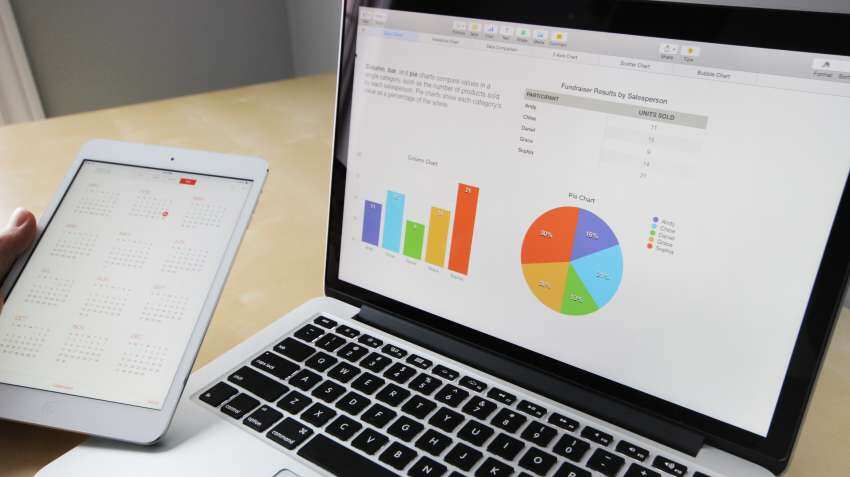Axis Bank share price drops post-Q4FY23 results - A bull vs bear case analysis
Axis Bank shares dropped in early trade on Friday as the private sector lender posted losses in its March quarter results for the financial year 2023 owing to the Citi merger.

Axis Bank shares dropped 2.3 percent in early trade on Friday, hitting an an intra-day low of Rs 860.5, a day after the private sector lender reported a net loss of Rs 5,728.4 crore in the fourth quarter of FY23. The private sector lender had posted a profit of Rs 4,117.8 crore in the year-ago period. Zee Business Research team had pegged the losses in the range of Rs 2,900 crore to Rs 5,900 crore. The loss came largely on account of costs incurred on acquiring Citi Bank's India consumer business. Axis Bank reported an exceptional item of Rs 12,489.82 crore during the March FY23 quarter, that includes the cost of buying and integrating the business assets and liabilities of Citibank's India consumer business.
For the full year, Axis Bank's net profit or profit after tax (PAT) came in at Rs 9,579.68 crore. The lender had reported a net profit of Rs 13,025.48 crore in the previous year. Axis Bank's net interest income (NII) -- net income earned minus total income paid -- came in at Rs 11,742.2 crore.
Axis Bank - Bull vs Bear Case
As per Zee Business research team, Axis Bank's fourth quarter results are encouraging, with the lender's advances up 19 per cent and deposit growth clocking a 15 per cent rise. Axis Bank's gross non-performing assets (GNPA) dropped from 2.38 per cent in Q3FY23 to 2.02 per cent in Q4FY23, while there was an improvement in net non-performing assets (NNPA), which came in at 0.39 per cent in Q4FY23 against 0.47 per cent in Q3FY23. Axis Bank's net interest margin (NIM) came in at 4.22 per cent in the March quarter against the December quarter's 4.26 per cent. Going forward, Axis Bank is expected to sustain deposit and loan growth and the acquisition of Citi will further boost income.
That said, Axis Bank may continue to face margin pressure and the Street may not favour the lender's move to add the entire exceptional loss to the books, as per the Zee Business research team. Furthermore, Axis Bank's NIM growth doesn't inspire much confidence and margin pressure offsets the growth in CASA, they added. NIM measures profitability of a financial firm comparing the net interest income it generates from credit products like loans and mortgages against the outgoing interest it pays to depositors. The current account savings account or CASA ratio indicates how much of a bank's total deposits are in both current and savings accounts.
Brokerages on Axis Bank - Bull vs Bear case
Among brokerages, Jefferies and Morgan Stanley remain positive on Axis Bank post-Q4 results. Jefferies has maintained a 'buy' rating and raised the target to Rs 1,150 from Rs 1,100 per share. Morgan Stanley has maintained an overweight stance on Axis Bank with the target at Rs 1,200. On the other hand, HSBC and JP Morgan have cut targets while maintaining ratings. HSBC has reduced the target price on Axis Bank to Rs 1,055 from Rs 1,100, while JP Morgan has slashed it from Rs 1,100 to Rs 1,000. Macquarie has an overweight stance, like JP Morgan, with the target set at Rs 940.
Axis Bank share price movement today
Axis Bank shares traded under pressure dropping nearly 3 percent in early trade, continuing its two-day downtrend. The stock has fallen 3.4 per cent in the last two days, but still trading higher than its 50-day, and 200-day moving averages but lower than 5-day, 20-day and 100-day moving averages. In the last one year, Axis Bank stock price has surged almost 10 percent, outperforming benchmark Sensex by 4.5 percent. During the period, the Sensex return has been at 5.4 per cent.
Also, catch all the live updates from the markets with ZeeBiz.com's blog
Get Latest Business News, Stock Market Updates and Videos; Check your tax outgo through Income Tax Calculator and save money through our Personal Finance coverage. Check Business Breaking News Live on Zee Business Twitter and Facebook. Subscribe on YouTube.
RECOMMENDED STORIES

Small SIP, Big Impact: Rs 1,111 monthly SIP for 40 years, Rs 11,111 for 20 years or Rs 22,222 for 10 years, which do you think works best?

Looking for short term investment ideas? Analysts suggest buying these 2 stocks for potential gain; check targets
11:06 AM IST









 No interest rate cut in RBI's February policy review, or anytime in FY26: Axis Bank chief economist Neelkanth Mishra
No interest rate cut in RBI's February policy review, or anytime in FY26: Axis Bank chief economist Neelkanth Mishra SEBI sends notices to Axis Bank, Axis Securities, Axis Capital over Max Life deal; more pain ahead for investors?
SEBI sends notices to Axis Bank, Axis Securities, Axis Capital over Max Life deal; more pain ahead for investors? Axis Bank shares zoom up 4% despite weak Q2; Here's what global brokerages suggest
Axis Bank shares zoom up 4% despite weak Q2; Here's what global brokerages suggest Axis Bank Q2 preview: PAT likely to increase 8.5% YoY; asset quality may be affected marginally
Axis Bank Q2 preview: PAT likely to increase 8.5% YoY; asset quality may be affected marginally